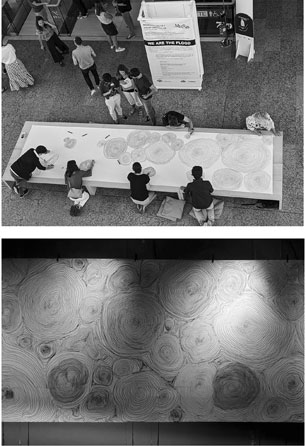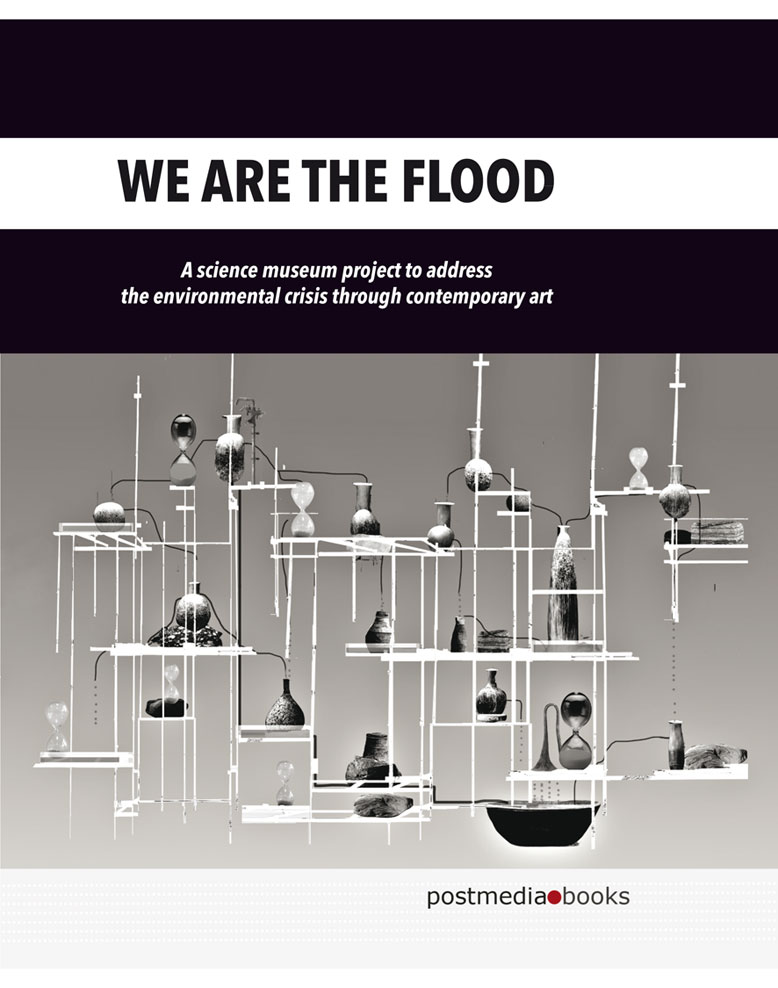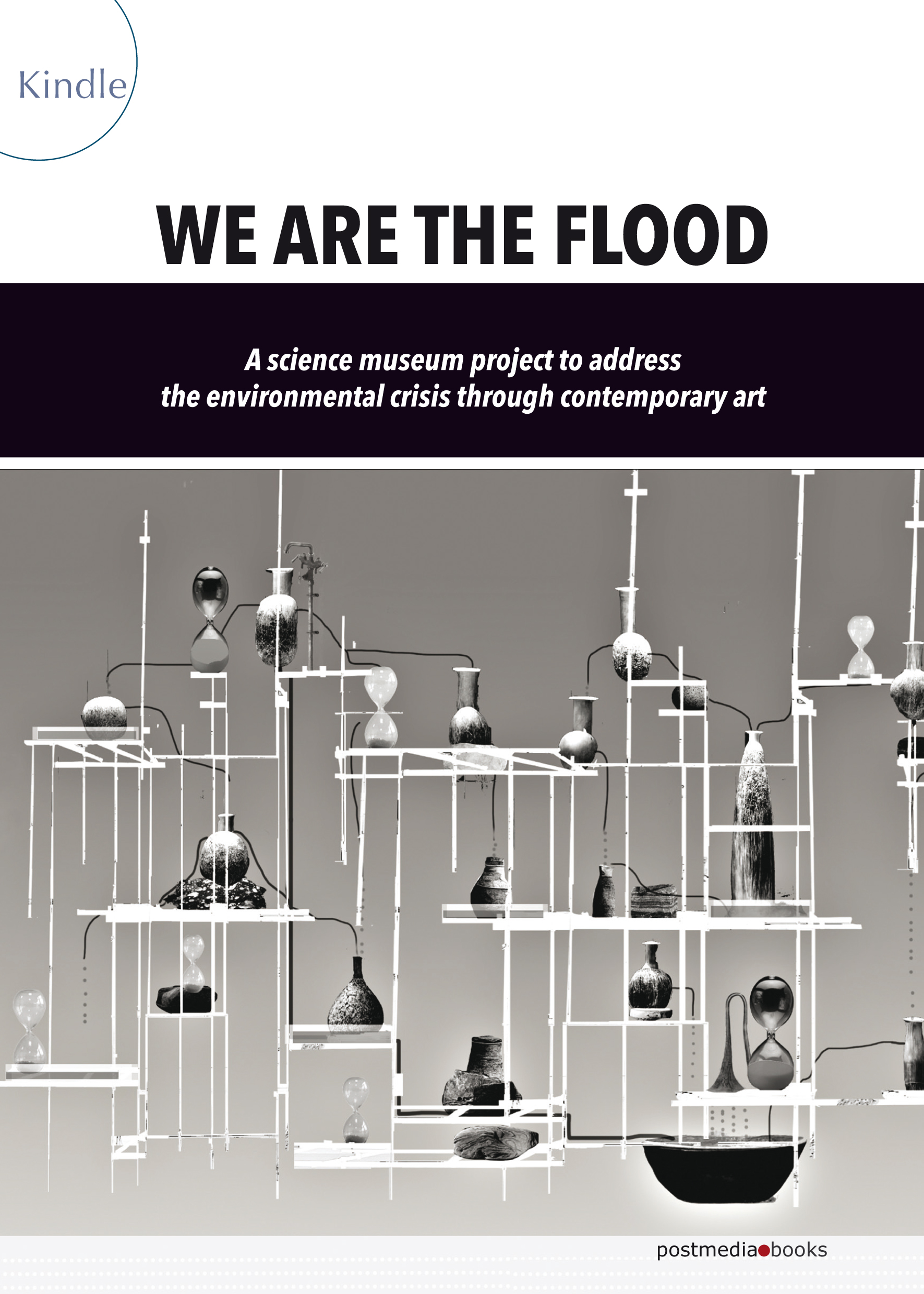We Are the Flood
Il progetto di un museo scientifico
per affrontare la crisi ambientale attraverso l'arte contemporanea
A science museum project
to address the environmental crisis through contemporary art
a cura di Stefano Cagol
postmedia books 2023
saggi in italiano e inglese
160 pp. 36 ill.
isbn 9788874903566
| 16,90 acquista online |
|
buy from DE _ FR _ USA _ ESP _ SE _ UK
Di fronte a sempre più veloci cambiamenti eco-culturali, un museo delle scienze innesca un'alleanza con le discipline umanistiche e dà vita a una piattaforma creativa su crisi climatica, interazioni antropoceniche e transizione ecologica, che fa leva sul linguaggio universale dell'arte contemporanea per tradurre questioni complesse. È quest'esperienza di contaminazione e multidisciplinarietà portata avanti dal MUSE – Museo delle Scienze di Trento al centro del libro. Al suo interno, una sezione teorica spiega le ragioni del museo e seguono le diverse tappe messe in pratica dal progetto nel suo primo anno di vita, raccontate dalle parole degli stessi protagonisti. Viene così svelato un metodo di formazione e trasformazione con l'intento di renderlo un modello che possa essere replicato e contribuire così a costruire futuri desiderabili. La piattaforma We Are the Flood | Noi siamo il diluvio è ideata e curata dall'artista Stefano Cagol.
In the face of accelerating eco-cultural changes, a science museum triggers an alliance with the humanities and starts a creative platform on the climate crisis, anthropocenic interactions and ecological transition, that leverages the universal language of contemporary art to translate complex issues. This experience of contamination and multidisciplinarity carried out by the MUSE – Science Museum in Trento is the content of the book. Inside, a theoretical section explains the rationale for the museum and follows the different stages put into practice by the project in its first year of life, told in the words of the participants themselves. Its method of education and transformation is unveiled to make it an example that can be multiplied and thus help build desirable futures. The platform We Are the Flood is conceived and curated by the artist Stefano Cagol.
Con saggi di / with essays by: Michele Lanzinger, Massimo Bernardi, Alice Labor, Carlo Maiolini, Patrizia Famà, Stefano Cagol, Nezaket Ekici, Julie Reiss, Mary Mattingly et al...
Oltre a gesto attivista contro la crisi ecologica, una zuppa lanciata contro un vetro in un museo può essere considerata anche una performance artistica? E quale legame può (o deve?) esistere fra queste due forme di espressione in anni di forte ripensamento delle pratiche sociali alla luce della sostenibilità ambientale, sociale, economica?
Queste riflessioni, nate dai recenti fatti di cronaca che hanno riguardato attivismi e musei, mi fanno pensare a una domanda ricorrente: un museo deve svolgere un ruolo attivo che si concretizza nel raccontare e interagire con la società contemporanea? E se la risposta è sì, come svolgere questo compito? E ancora: i musei possono essere i luoghi dove si affrontano (e si contribuisce a risolvere) i grandi problemi contemporanei e svolgere la funzione di laboratorio di sviluppo locale proprio per la loro capacità, o impegno, a connettere la dimensione locale con quella globale? In altri termini, i musei possono funzionare da luogo sentinella anticipando o per lo meno contribuendo a creare un'immagine di futuro desiderabile dal momento che, a ben pensarci, questo è il primo passo per poi poterlo realizzare? È di questo che dobbiamo discutere quando ci confrontiamo con l'attivismo climatico e le sue azioni all'interno dei musei.
_ Michele Lanzinger
Besides being an activist gesture against the ecological crisis, can a soup thrown against a protective glass in a museum also be considered an artistic performance? And what connection can (or should?) exist between these two forms of expression in years of profound rethinking of social practices in the light of environmental, social and economic sustainability?
These reflections, which arose from recent news involving activisms and museums, make me think of a recurring question: should a museum play an active role in narrating and interacting with contemporary society? And if the answer is yes, how to perform this task? And again: can museums be the places where main present problems are addressed (and helped to be solved) and play the role of a laboratory of local development precisely because of their ability, or commitment, to connect the local dimension with the global one? In other words, can museums function as a sentinel site by anticipating or at least helping to create a desirable image of the future since, if we think about it, this is the first step towards its realisation? We must discuss right this when confronting climate activists and their actions within museums.
_ Michele Lanzinger
Formato Kindle
8102 KB _ abilitato voce
asin B0CYLTXQHX
Manifesto __ We Are the Flood nasce radicato nel suo tempo, un tempo a confronto con l'impatto dell'essere umano sulla Terra, in cui emerge in Europa il concetto di Nuovo Bauhaus Europeo, ossia di centralità della cultura come chiave di volta nella programmazione del futuro. Le basi di questa visione sono espresse nel testo di presentazione di NextGenerationEU. We Are the Flood le ha fatte proprie disseminando nel proprio manifesto termini e passaggi, riconoscibili tra le virgolette.
Manifesto __ We Are the Flood was born rooted in its time, a time confronted with the impact of human beings on the Earth, in which the concept of the New European Bauhaus emerged in Europe, i.e. the centrality of culture as the key to planning for the future. The basis of this vision is expressed in the presentation text of NextGenerationEU. We Are the Flood embodied it by disseminating in its manifesto terms and passages recognisable between the inverted commas.


